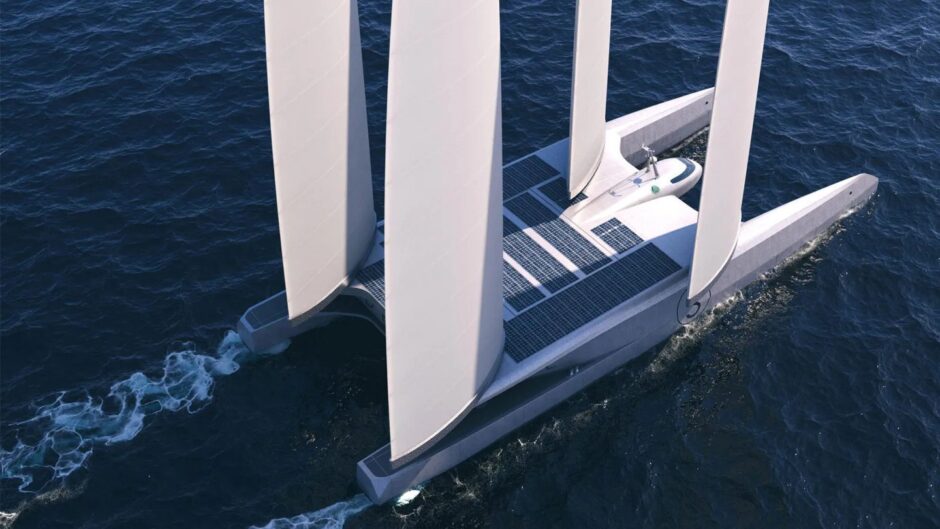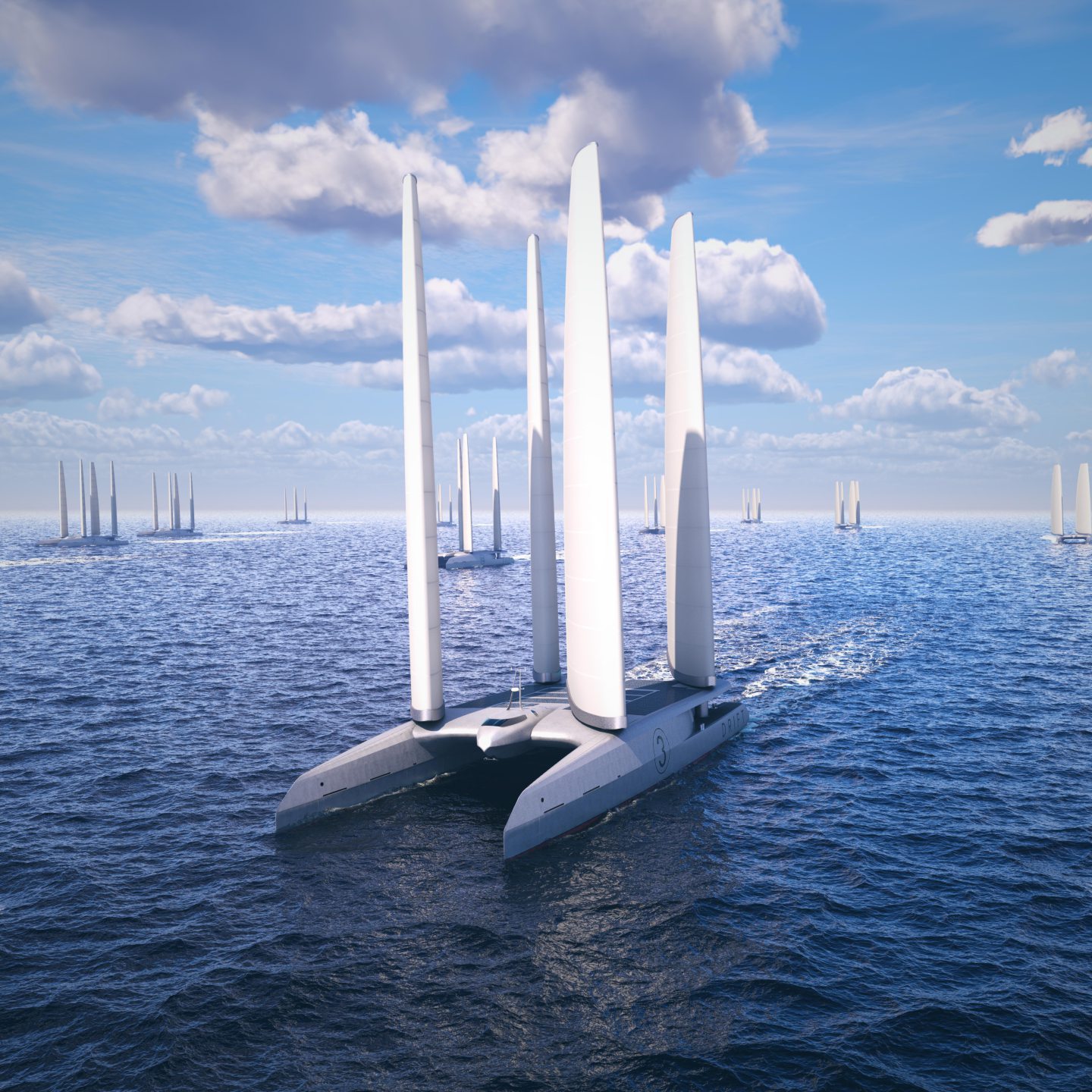
A British firm aiming to produce green hydrogen at sea has raised £4.6 million from investors as it aims to build its first vessel next year.
DRIFT Energy has designed a high-performance sailing vessel which harnesses deep ocean wind to produce hydrogen from an onboard electrolyser.
The Bath-headquartered firm aims to one day deploy a fleet of vessels to deliver green hydrogen on demand.
It aims to position the vessels as a decarbonisation option for small island states, heavy industries, shipping and superyachts.
The vessels use advanced routing software which seeks out optimum wind and wave conditions.
DRIFT estimates this could allow the vessels to achieve close to twice the load factor of North Sea wind farms by maximising utilisation time.
DRIFT Energy ‘Hydroloop’
Eventually, DRIFT hopes to operate a flotilla across the world’s tradewinds in that it calls a “Hydroloop”, allowing the vessels to produce and deliver hydrogen flexibly to ports or directly to other ships around the world.
DRIFT successfully produced green hydrogen from a prototype hydrofoil sailboat during sea trials in 2022, and is currently exploring shipyard options to build its first full-scale vessel after completing its funding seed round.
The initial ‘MVY‘ vessel will be able to support a 1 MW electrolysis plant on board, and store up to four tonnes of hydrogen per trip.
DRIFT said future classes of vessels “will be capable of higher production capabilities”.
The firm estimates construction of the first vessel will take 18 months to complete after work gets underway next year.
The seed funding round attracted investment led by Octopus Ventures with support from the Blue Action Accelerator.
The concept also received £694,135 in funding support from Innovate UK, the UK government innovation agency.
DRIFT founder and chief executive officer Ben Medland said the funding will support “the next phase of our mission”.
“We will work closely with Octopus and our advisory teams to bring our vision of ‘Oceans of Energy’ to life with that all-important first net positive ship,” he said.
Blue Action Accelerator co-founder George Northcott said the organisation’s mission is to “help scale groundbreaking technologies that preserve marine environments and support coastal-dependent communities”.
“DRIFT is the ultimate example of that – creating a new class of mobile renewable energy from the world’s seas and delivering it to where it is needed – from island nation communities to power hungry ports,” he said.
Green hydrogen
Despite the green hydrogen sector facing challenges in scaling up, with some high profile projects cancelled, it could be key for decarbonising the shipping sector.
Green methanol, produced using green hydrogen, is seen as one of the most promising ways to decarbonise maritime shipping.
Norway’s state-owned Equinor is one of many firms investing in a range of alternative green fuels with green hydrogen and captured CO2 as feedstocks.
Similarly, green hydrogen is also proving to be beneficial to some small island economies like the Orkneys in Scotland.
With small island developing states largely dependent on fuel imports, governments are increasingly to improve their energy security renewables investment, including through green hydrogen.
Recommended for you


 © Supplied by DRIFT Energy
© Supplied by DRIFT Energy